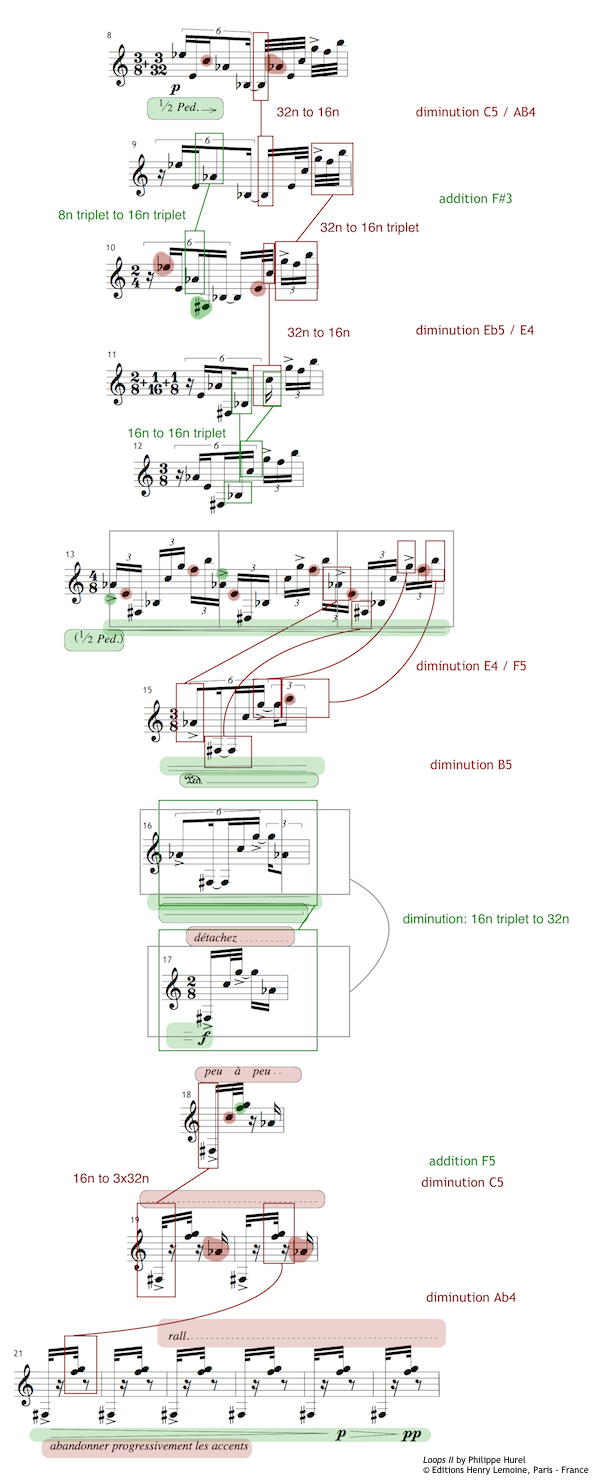Improving the practice and performance of contemporary music
Loop A - main motif - regressive period
The tendency in this period is toward note-diminution, although F#3 and F5 are added notes. The rhythm treatment is ambiguous in this period: both rhythmical diminution (marked in green: the density is raised) and rhythmical augmentation (marked in red: the density is lowered) appear. Dynamics evolve in crescendo from piano in measure 13 towards forte in measure 27 and move back to pianissimo in the last six measures of the period. In measure 13 and measure 17 accents are added. These accents disappear again in the last six measures of the period. The phrasing starts with 1/2 pedal indications, then transforms via full pedal in measures 15 and 16 before returning to 1/2 pedal from measure 17 onward, reinforced by the marking “detaches peu à peu”. The melodic curve evolves from the quite fluent main motif to large intervals at the end of the period, almost bridging the entire range of the vibraphone. The tempo is lowered from 60 to 50 bpm in the last four bars.
Interpretation can enhance the loops process in measures 12 through 26. Beginning with the established sextuplet pattern, the composer quite suddenly alters the rhythm into a binary pattern in measure 17. This pattern can be ‘prepared’ by gradually speeding up the rhythm in bar 16. In this way, the rhythm in bar 17 does not appear suddenly, but is prepared by a transitory rhythm, which is something between sextuplets and thirty-second notes. Additionally, the pedaling can help in this particular passage and the following passage in measures 17 through 21. By gradually decreasing the use of the pedal in these bars from almost full pedal to practically non-pedal, the transition becomes much clearer and the “détachez peu à peu” idea comes out better.
